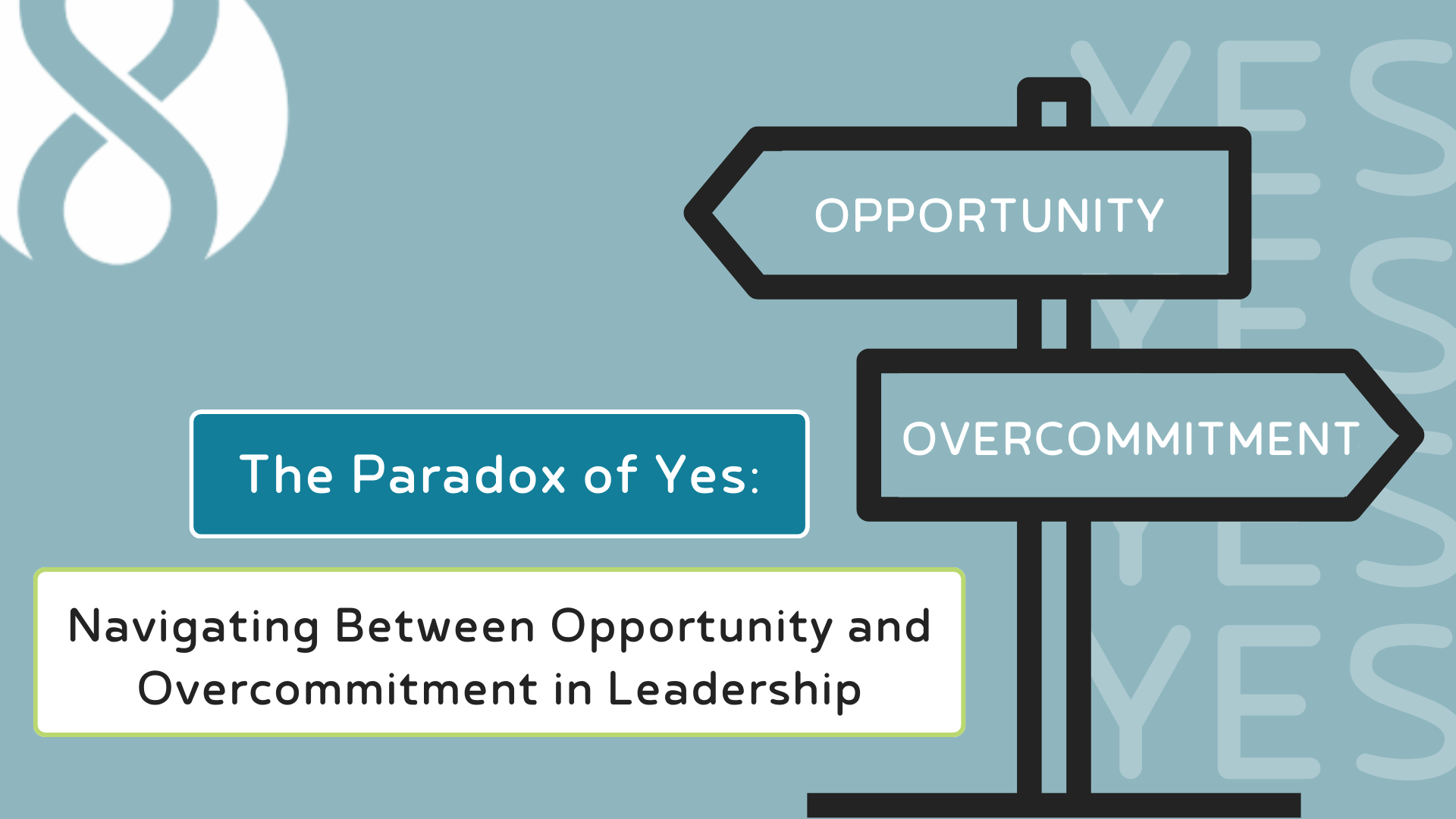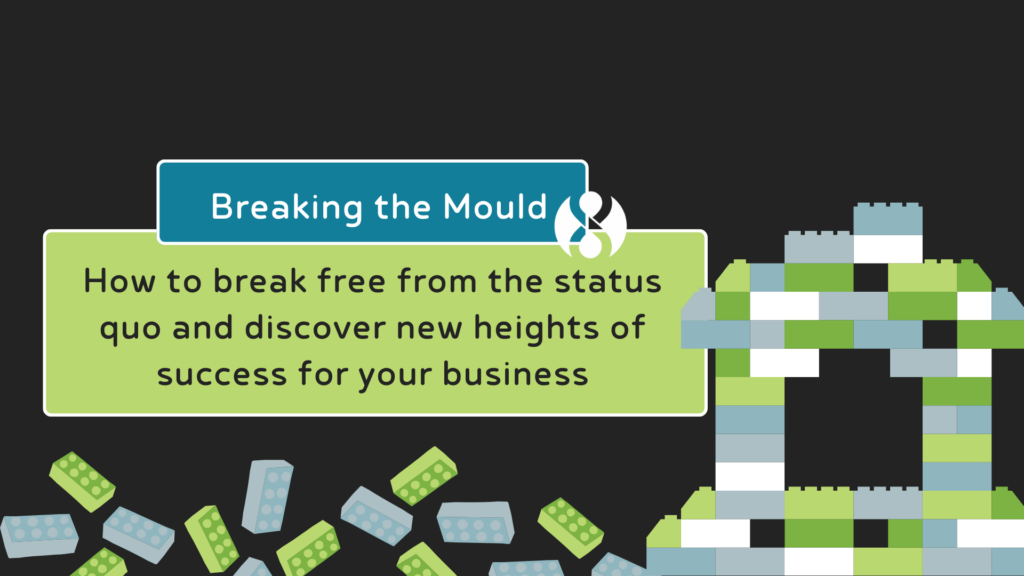In the landscape of leadership, the power of saying “yes” is often heralded as a gateway to opportunities and growth. However, this seemingly positive trait can have a dark side. At The Rumin8 Group, we delve into this paradox, understanding the fine line between embracing opportunities and avoiding the pitfalls of over-commitment.
The Double-Edged Sword of Saying “Yes”
The act of saying “yes” in leadership is like walking a tightrope. On one hand, it opens doors to new challenges, growth, and learning opportunities. On the other, it can lead to a plethora of issues including burnout, inefficiency, and a dilution of focus. When leaders say “yes” indiscriminately, they risk shifting from a path of excellence to merely getting by, overwhelmed by the sheer volume of commitments.
Recognizing the Risks of Over-Commitment
The downsides of constantly affirming every request or project are countless, but some of the most common challenges we see are:
Burnout and Inefficiency: Taking on too much leads to exhaustion and reduces the quality of output. Leaders and their teams find themselves spread too thin, unable to give their best to any single task. It’s better to do fewer things and do them well.
Stifled Organizational Growth: An overburdened team is a stagnant one. Without the space to innovate or focus on strategic goals, the organization’s growth is hampered.
Loss of Strategic Focus: The more a leader takes on, the less they’re able to focus on their core objectives. The result is a leadership style that is reactive rather than proactive.
Erosion of Leadership: The more you say yes to every request or idea, the less effective your leadership.
The Waterfall Effect in Organizations
In many organizations, the over-commitment of leaders creates a waterfall effect. The burden of excess work cascades down through the ranks, fostering a culture where tasks are accepted without proper assessment of their relevance or impact. This leads to a workplace that operates on autopilot, reacting to tasks rather than strategically engaging with them.
Embracing the GWC Framework for Better Decision-Making
At The Rumin8 Group, we encourage the use of the GWC framework (Get it, Want it, Capacity for it) to counteract the tendency to over-commit. Its beauty and its efficacy are in the simplicity of the three-pronged approach. If you don’t hit all three, don’t do it:
Get It: Understanding the task’s requirements and implications.
Want It: Having a genuine interest or stake in the task’s outcome.
Capacity for It: Possessing the necessary resources and time to commit to the task effectively.
Applying this framework ensures that commitments are made judiciously and are in line with the leader’s and the organization’s capabilities and goals.
Intentional Commitment: Questions to Consider
Leaders are often asked to do a variety of things every day, week, or month by both inside and outside influencers. This can be teams, customers, boards of directors and even more senior leaders. Before saying “yes,” it’s important to ponder these questions:
- How does this align with my or the organization’s goals?
- Can I add significant value to this task?
- Do I have the necessary resources and time to dedicate to this effectively?
These questions aid in avoiding the trap of busyness for busyness’s sake, ensuring a focus on tasks that genuinely contribute to personal and organizational growth.
The Four Ds Strategy for Managing Commitments
The ‘Four Ds’ strategy—Do, Delegate, Defer, or Delete—is a practical tool for managing commitments that we employ often at The Rumin8 Group and during our coaching. This method helps leaders to:
Do: Identify tasks that are essential and need immediate attention.
Delegate: Assign tasks that can be better handled by other team members.
Defer: Postpone tasks that are not urgent or crucial at the moment.
Delete: Eliminate tasks that are unnecessary or don’t align with goals.
This strategy aids leaders in maintaining focus on their core responsibilities and ensuring that their commitments are meaningful.
The Role of Self-Awareness in Decision-Making
A key aspect of navigating the ‘yes’ paradox is self-awareness. Leaders need to be cognizant of their strengths, weaknesses, and limits. Understanding one’s capacity for work and the ability to discern the significance of tasks is crucial in making informed decisions about commitments.
Further, it’s important to ask yourself why you’re saying yes. If your affirmative nature is based in wanting to prove a point, impress others, or be “the best”, you’re setting yourself (and your team) up to fail.
Fostering a Culture of Thoughtful Commitment
Creating a workplace culture that values thoughtful commitment over sheer volume of work is essential. This involves training and empowering teams to make decisions based on strategic value rather than automatic acquiescence.
Mastering the Art of Smarter Commitment
The goal for leaders is not to become vessels for every task but to be catalysts for meaningful and impactful actions. Saying “yes” should open doors to growth and opportunity, not lead to a cluttered and unproductive work environment. By employing mindful decision-making strategies and tools like the GWC framework and the Four Ds, leaders can ensure they are productively engaged in work that drives both personal and organizational growth.
For leaders and organizations seeking to improve their decision-making balance between saying “yes” and “no,” The Rumin8 Group offers tailored guidance and support. Get in touch today.
🔑 Are you a leader who says ‘yes’ to everything? It’s time to rethink your strategy! Our latest article from The Rumin8 Group explores the ‘Yes’ Paradox in Leadership. Learn how to strike the perfect balance between seizing opportunities and avoiding burnout.
Post 2:
Discover the power of balanced commitment with The Rumin8 Group! Our new article delves into the challenges of saying ‘yes’ too often in leadership. Find out how to use the GWC framework and the Four Ds strategy to make smarter decisions.
In leadership and business, the power of saying “yes” is often celebrated as a doorway to opportunity and growth. However, an unchecked habit of giving in to every request or project can lead to a state of burnout and inefficiency, turning leaders and their teams into ‘dump trucks’ for tasks. This scenario underscores a critical insight: the enemy of great is good. By saying yes too many times, leaders risk diluting their focus and efforts, moving away from greatness to just getting by.
The Downside of Constantly Saying “Yes”
The willingness to take on tasks and challenges is commendable, but without discernment, it becomes a trap. When leaders and teams habitually say yes, they often find themselves overworked and underperforming. Their work becomes a monotonous cycle of ‘busy work’ rather than impactful contributions. This not only leads to personal burnout but also stunts organizational growth.
The Waterfall Effect in Organizations
In many organizations, there’s a waterfall effect of work delegation. As work overflows at one level, it’s passed down the line, creating a culture where everyone is accustomed to simply accepting tasks without evaluating their relevance or impact. This lack of critical evaluation leads to a work environment that is reactive rather than strategic, with employees feeling undervalued and overburdened.
Embracing the GWC Approach
At The Rumin8 Group, we believe the solution lies in the GWC framework: Get it, Want it, and have the Capacity for it. Before saying yes, leaders and teams need to evaluate whether they understand the task (Get it), are invested in its success (Want it), and have the resources and time to execute it effectively (Capacity for it). This approach ensures that commitments are not just made but are made wisely and sustainably.
Questions for Intentional Commitment
For leaders prone to saying yes, there are essential questions to consider before taking on a new task or project:
- Does this align with my or the organization’s goals?
- Can I add real value to this task, or am I just filling a gap?
- Do I have the time and resources to commit to this properly?
This self-evaluation can help leaders avoid the trap of busyness and instead focus on tasks that genuinely matter and contribute to personal and organizational growth.
The Four Ds: A Simple Decision-Making Process
A practical tool for managing commitments is the ‘Four Ds’ Strategy: Do, Delegate, Defer, or Delete. This method offers a straightforward way to handle tasks, helping leaders to prioritize effectively and manage their workload. By applying this process, leaders can maintain focus on their core responsibilities and goals, ensuring that their ‘yes’ is impactful and meaningful.
Leaders need to navigate the fine line between opportunity and overcommitment. While saying yes can open doors, indiscriminate agreement can lead to a cluttered and unproductive work environment. By applying mindful decision-making strategies, leaders can ensure that they are not just busy but productively engaged in work that drives growth and excellence. In this journey, the key is not to be a vessel for every task but a catalyst for impactful action.


